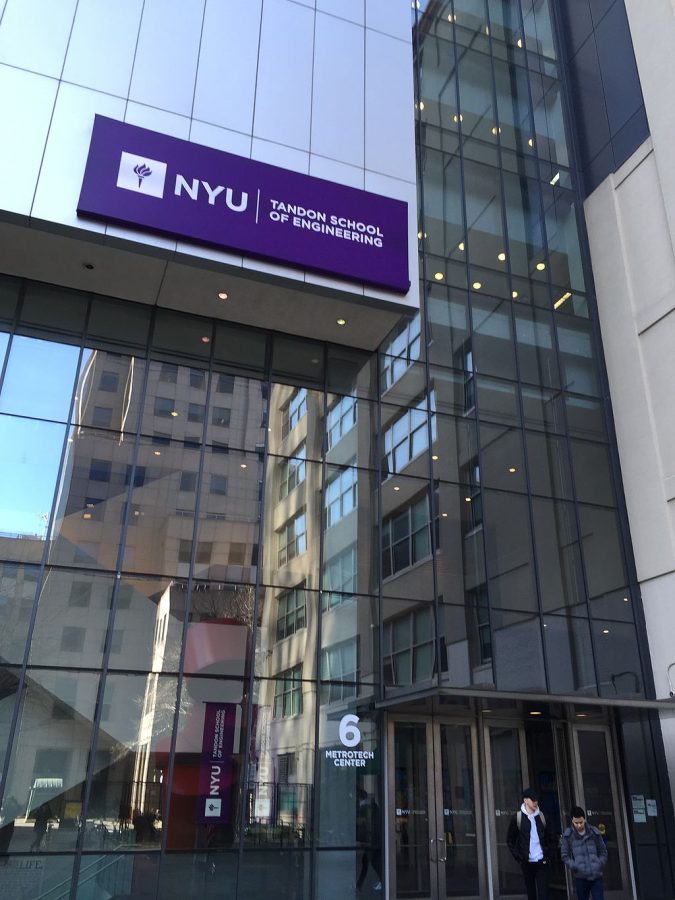On The Job: Interning at NASA
Tandon announces that they’re building a new $500 million academic building
November 21, 2016
Marijke Jorritsma has done it all. Previously a touring musician, educator and graphic designer, Jorritsma is now back at school as a master’s student at Tandon School of Engineering. Along with school, Jorritsma is also currently interning at NASA’s Jet Propulsion Lab — America’s leading center for robotic space exploration. She presented a model of NASA’s 2020 Mars Rover at an NYU event earlier this month. We were able to speak to Marijke to find out a little bit more about her career, her inspiration and how she’s balancing it all with being back in school.
WSN: What exactly do you do at work?
MJ: I do user interface and user experience design often times referred to as “UX/UI.” I work in the operations lab and we explore how new technology can enhance operations. For instance, we’ve been working with the Microsoft HoloLens, which is like an augmented reality headset. We get data from Mars to create a holographic environment for our scientists to do research on Mars.
WSN: How did you get this position?
MJ: Before I started grad school, I worked at a game company. I made some connections and some of those people came to work at this lab. I let them know when I started grad school that I was really interested in interning with them in the future, so I started preparing a year in advance. When it was time to submit an application, I applied and went through an interview process. I submitted a portfolio of the relevant work I was doing working with E.R. research as well as some software development labs at NYU. I had some great experiences.
WSN: Is this something that you sort of stumbled upon or was it always in the back of your mind that you would want to work at NASA one day?
MJ: I’ve sort of had a couple of other careers already and I wanted to do something different. I used to be a touring musician and then I was an educator. It never occurred to me that I could be doing this, and I never knew anyone that worked at NASA. I don’t think I ever thought, “When I grow up I want to work at NASA.” I just kept meeting people throughout my career who were doing cooler and cooler things, and I would constantly update what I thought was possible for myself. When I finally met someone who was working at JPL while I was doing design, I thought, “That is exactly what I want to do.”
WSN: Tell me a little bit about your demonstration of the 2020 Mars Rover at the NYU event on Nov. 7.
MJ: That’s one of the projects I’ve been working on here at JPL. It’s a project where we use the CAD models from spacecraft engineers. That’s how we design what the spacecraft is going to look like. The project that I’ve been working on is taking the CAD model and turning it into a hologram that multiple people can see and interact with at once. It allows users to see what the spacecraft is going to look like before it’s ever been built. They can see how big it is and whether or not things are too close together. That’s a concern with spacecraft design. If parts are too close together and [the spacecraft is] entering the atmosphere of a new planet, parts can shake or they can hit each other and explode.
WSN: What is the most interesting part about working at NASA?
MJ: At this particular location, there’s a lot of diversity. It’s definitely more diverse than other tech companies that I’ve looked at, so for me, it’s really awesome. Oftentimes I’ll be sitting at a software design or development meeting and it will be 50 percent or even more women in the room. In fact, the other day I was observing operations for a rover that we currently have on Mars, and the majority of scientists and engineers that were participating in operations were women. So I was really surprised and delighted to see such representation of women in science and technology here at the JPL.
WSN: What’s the most difficult part of juggling school with your job, and what’s the most rewarding part of your experience at JPL?
MJ: The hardest part has to be time management because I want to do a really good job at both. Sometimes, I have to speak up and let my work know that I’m not available to do some things, which can be difficult since I really want to do a great job there. I guess the coolest thing about working at NASA is that you feel like you’re part of this mission to sort of expand humanity’s understanding of the universe, which is just amazing.
WSN: Do you plan to stay at NASA?
MJ: Right now, I’m working on some new projects for the new rover designing software to help scientists and engineers figure out what the rover is going to do on a daily basis. I really like this project. There are a lot of design challenges and complex situations and it’s really interesting to work on, so yes, hopefully I get to stay here.
A version of this article appeared in the Monday, Nov. 21 print edition. E-mail Aiysha Sadana at [email protected].















































































































































